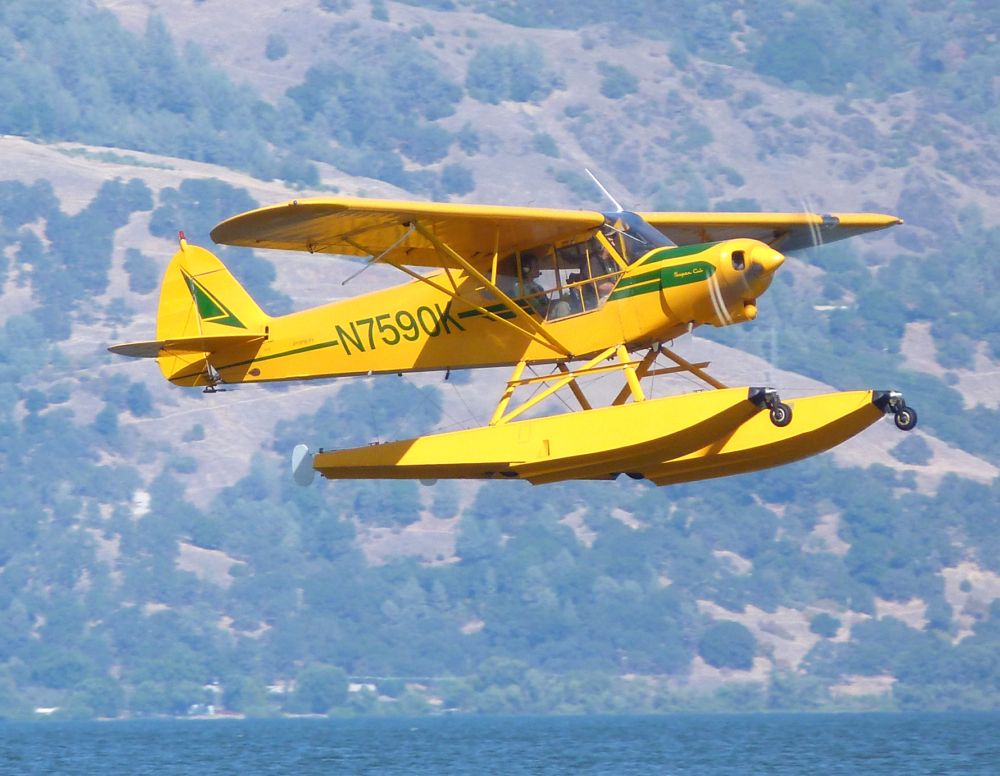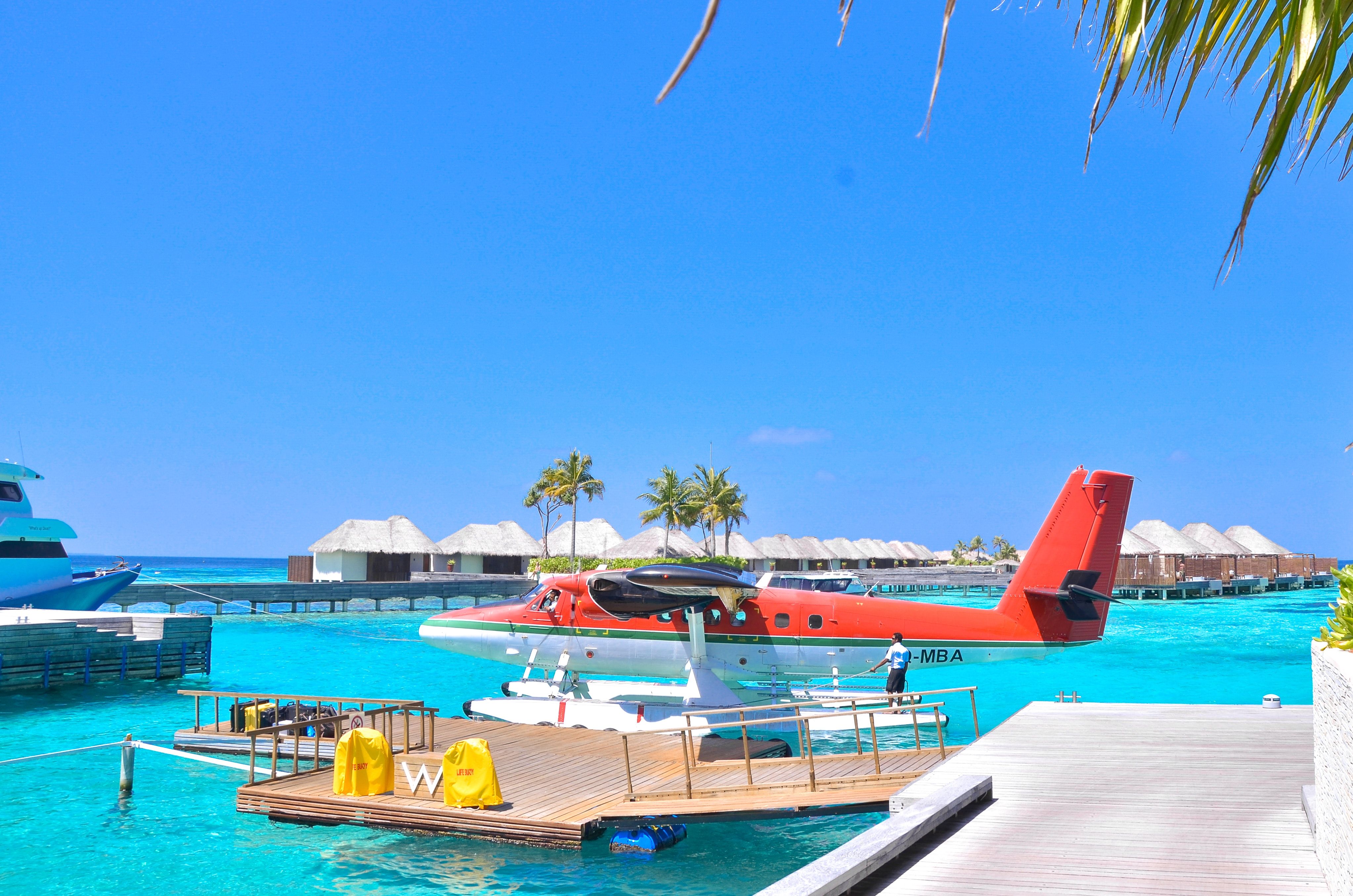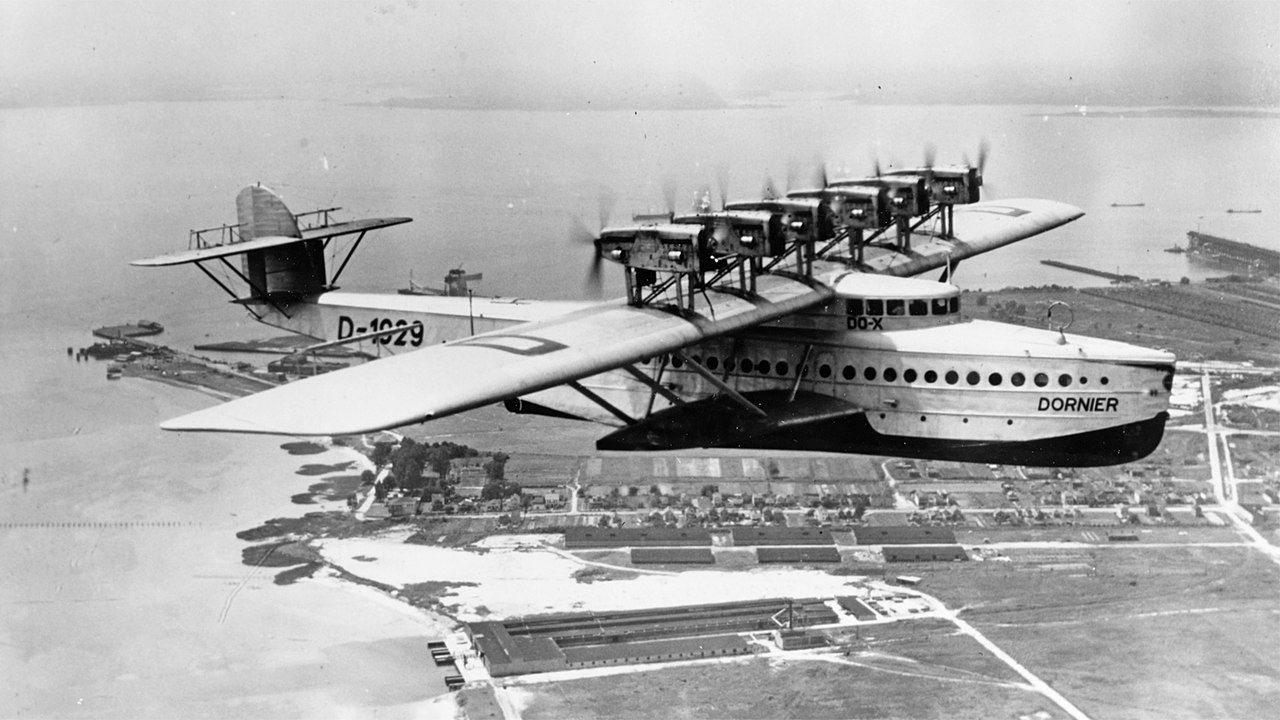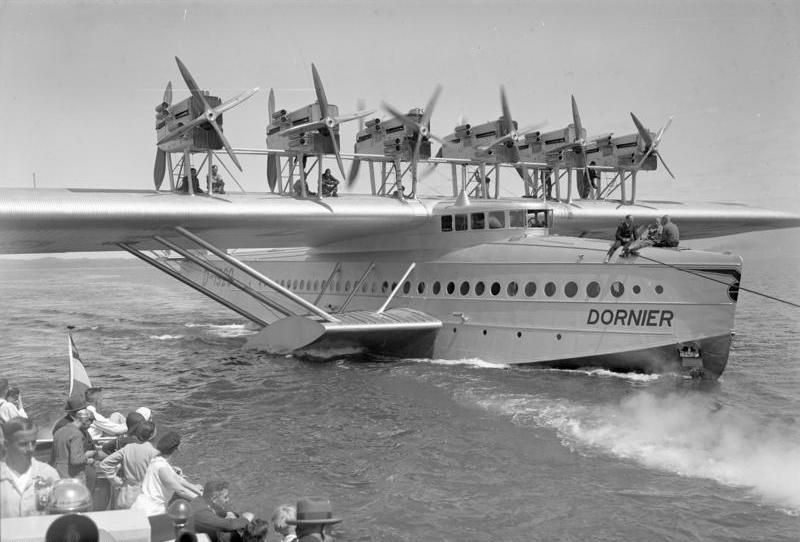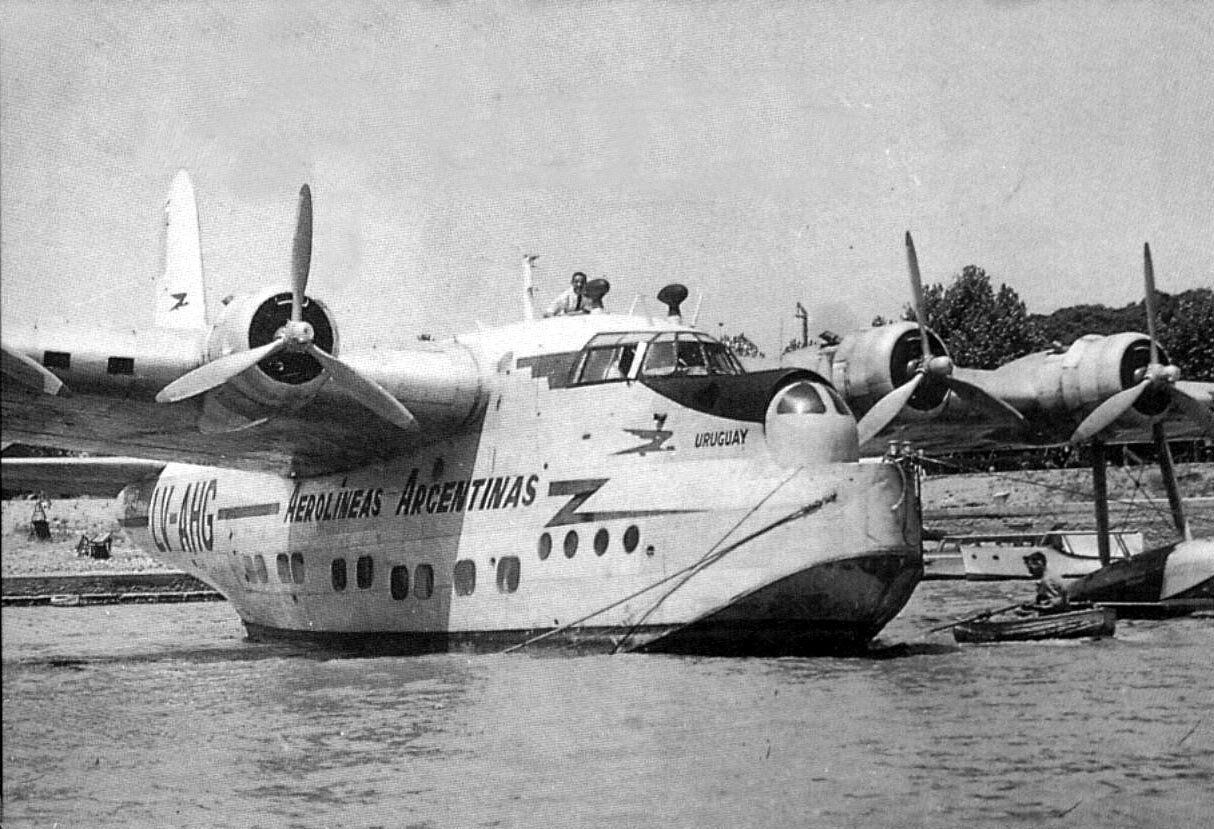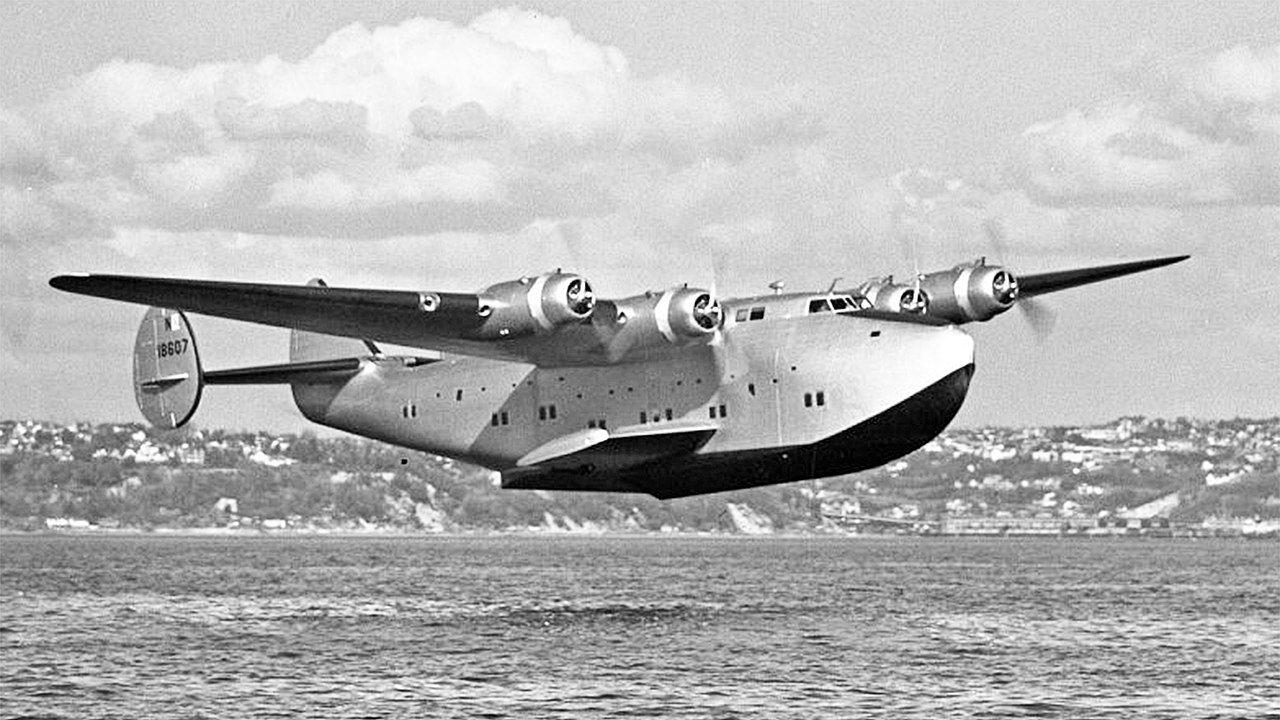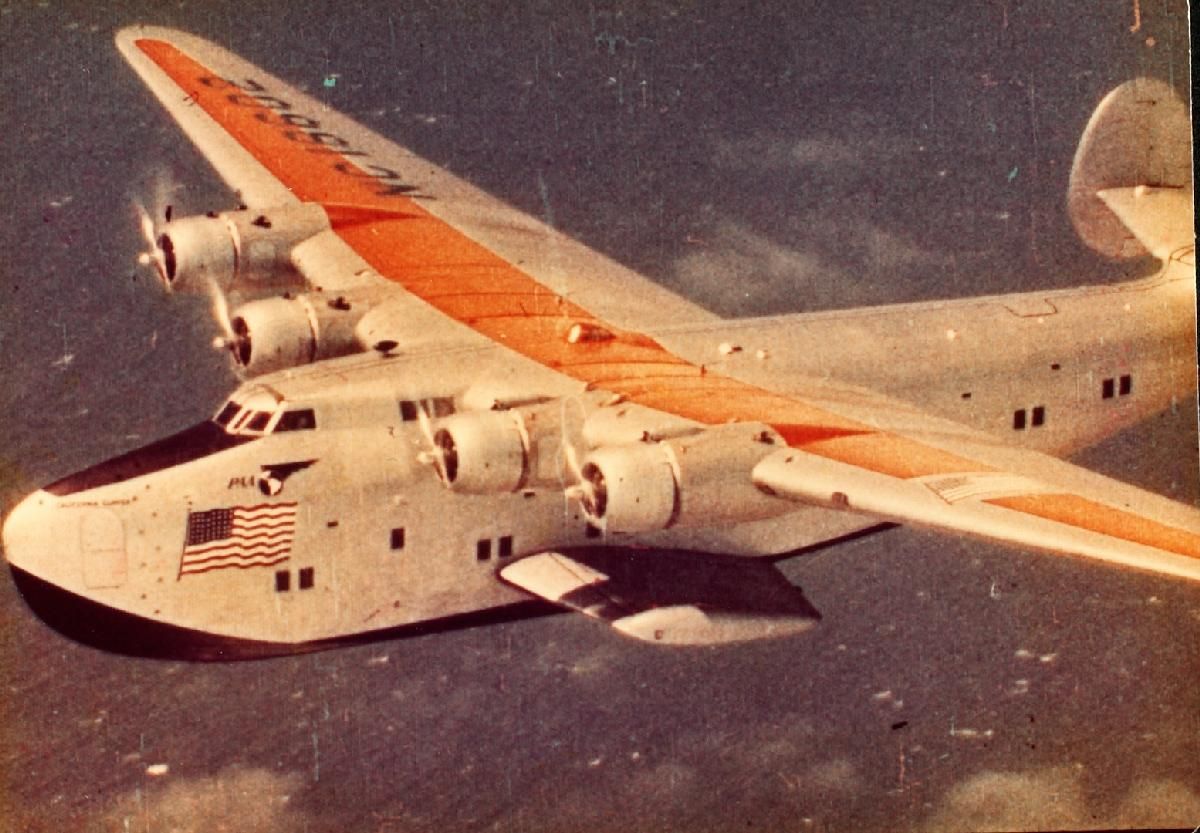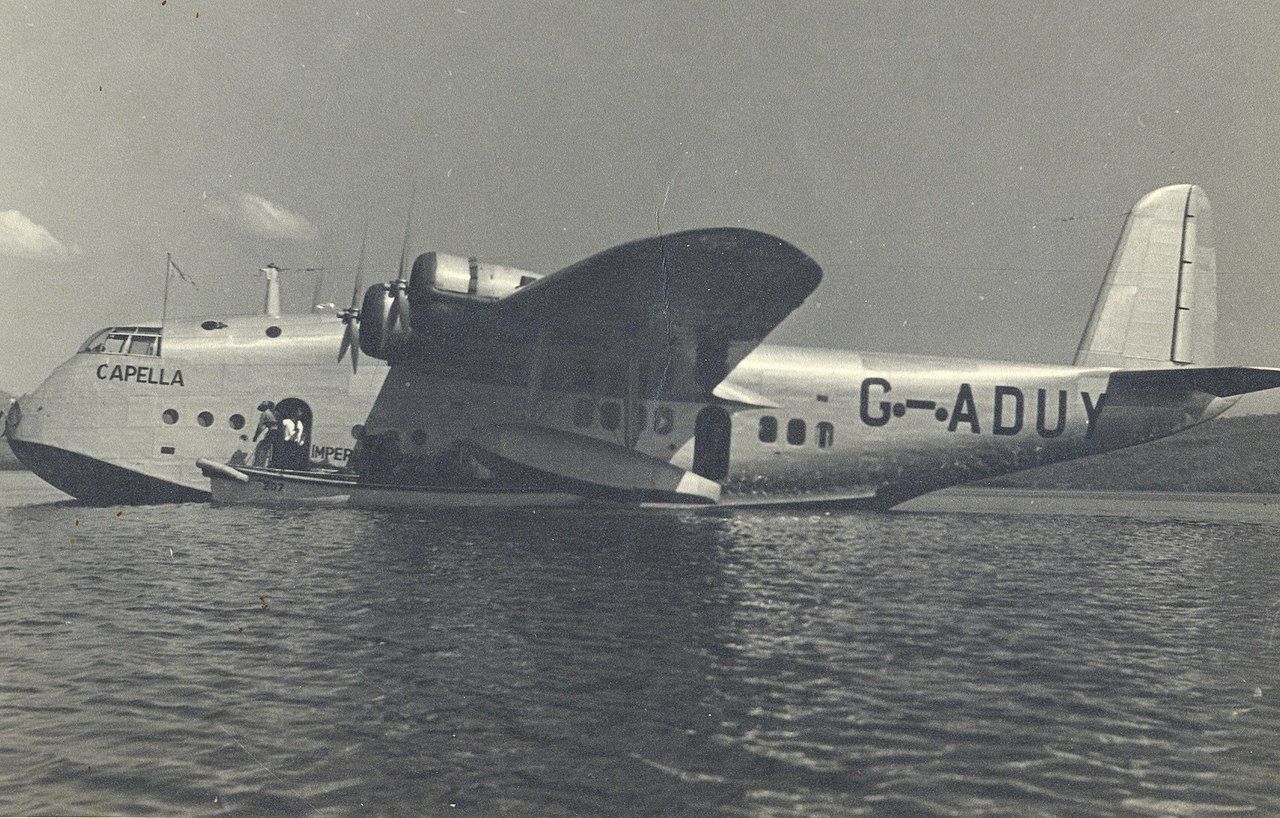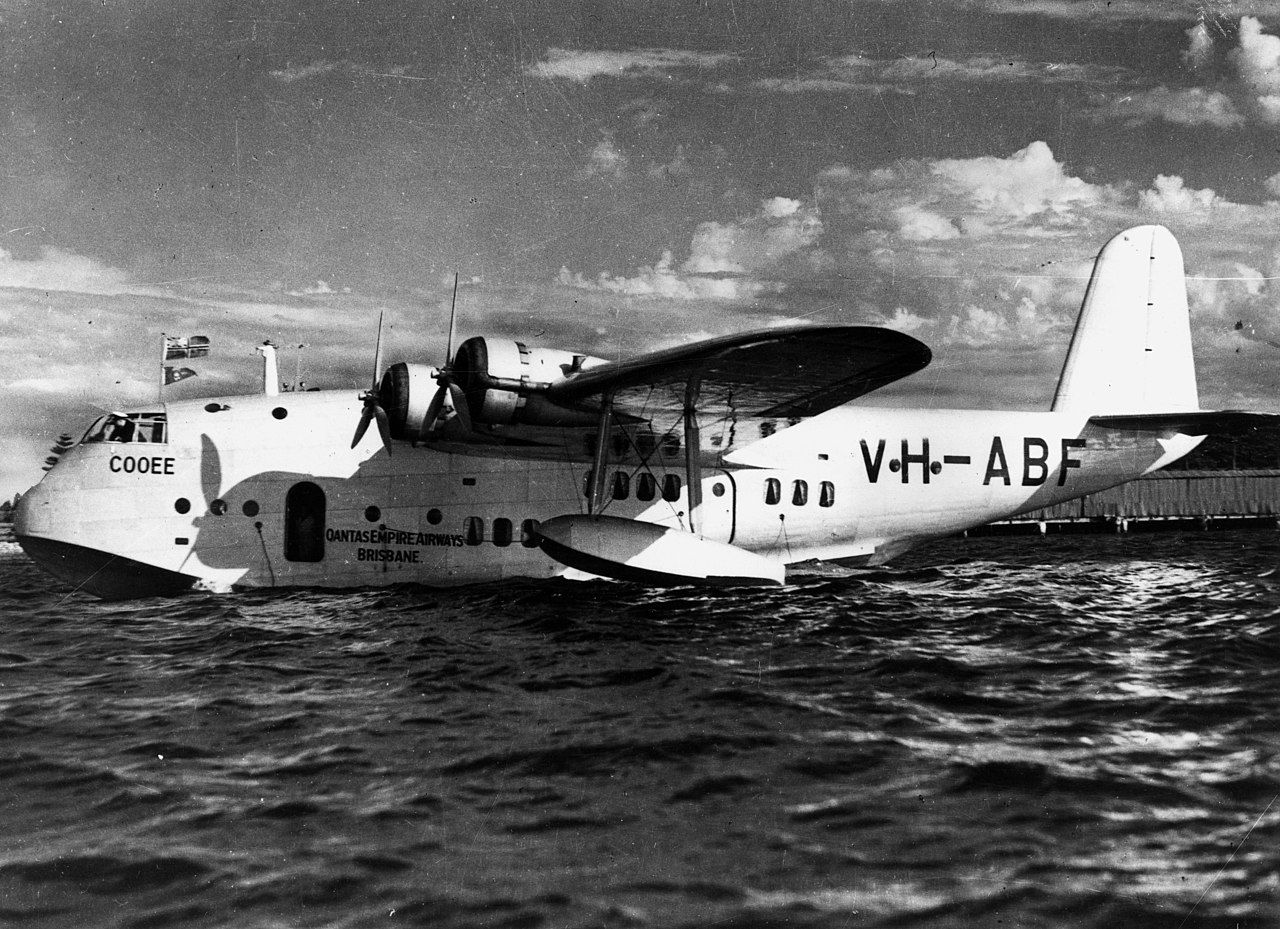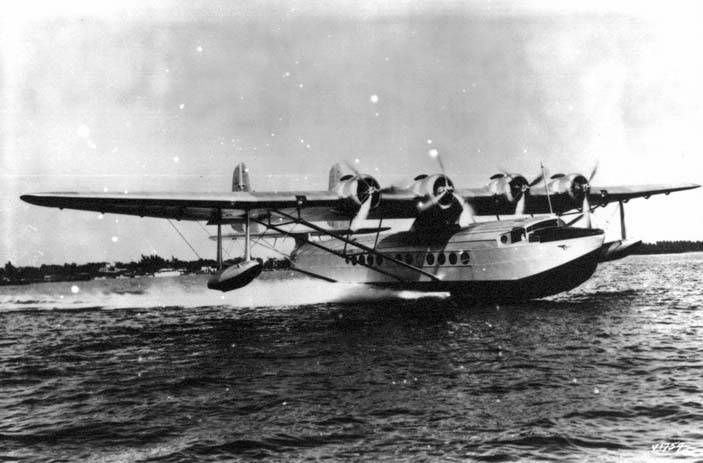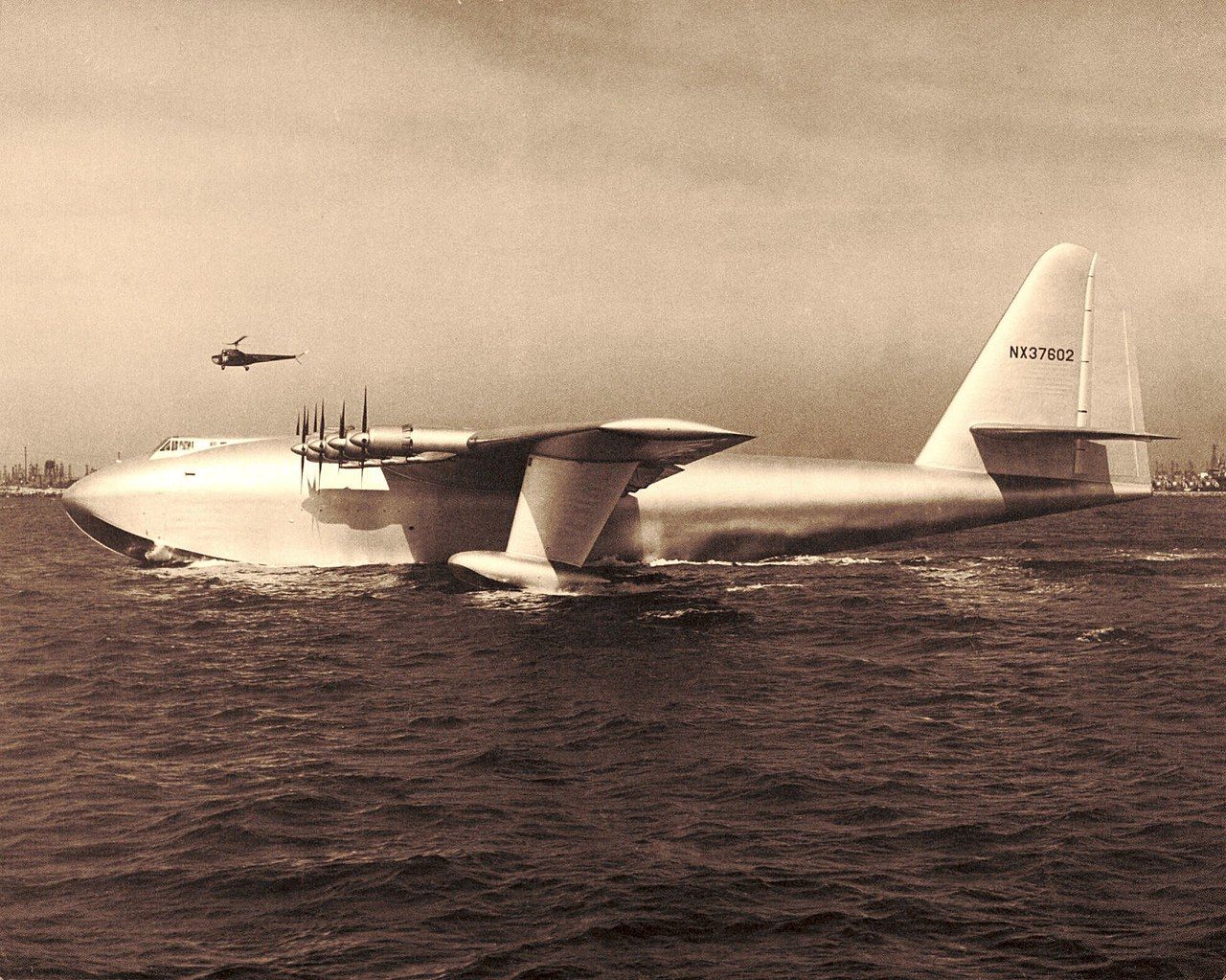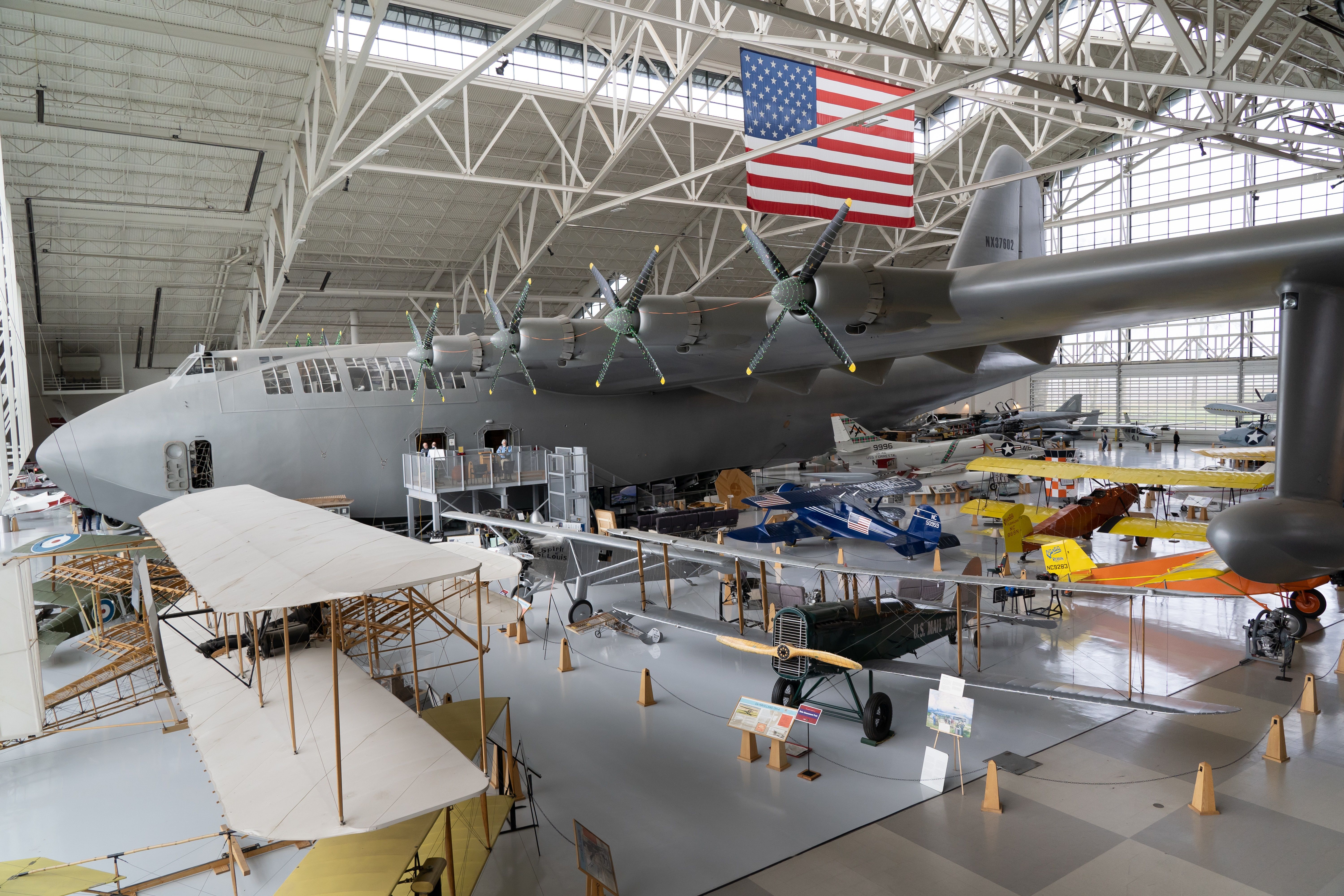Summary
- Flying boats are fixed-winged aircraft with a hull that allows them to operate on water, unlike floatplanes.
- The Dornier Do X, Short Sunderland, Boeing Model 314 Clipper, Empire Flying Boat, and the Sikorsky S-42 are iconic examples of passenger-carrying flying boats.
- The Hughes Hercules, also known as the ‘Spruce Goose,’ was designed as a strategic airlift flying boat but never became a passenger aircraft.
Largely confined to yesteryear, flying boats hold a unique place in passenger aviation history. Here, we list five of the most influential and iconic passenger flying boats ever produced.
What is a flying boat?
Before looking at our list of the most iconic flying boats ever built, a definition of ‘flying boat’ might be helpful. The term ‘flying boat’ has been misconstrued over the years. Indeed, it is often used interchangeably with other terms, such as seaplane or floatplane.
The generally accepted definition of a flying boat is a fixed-winged aircraft designed and built with a hull (similar to that found on watercraft). This hull-shaped fuselage allows the flying boat to operate on water. Flying boats occasionally have retractable landing gear so that they can also work on land.
The crucial difference between flying boats and floatplanes is that flying boats feature a fuselage purposely designed for flotation, akin to a water-borne vessel such as a boat.
Floatplanes, however, tend to be designed to be land-based aircraft that have been retrofitted with fuselage-mounted floats for buoyancy to operate off the water. The fuselage/belly of a floatplane is not intended to touch the water.
Lastly, we come to the term ‘seaplane,’ which is somewhat more vague. The term tends to be used for both of the above types – that is, any aircraft that can take off and land on water. However, traditionalists will tell you that while flying boats certainly fall within the seaplane category (mainly if they are confined to water operations), floatplanes (as initially designed for land operations) do not.
Yet, while float planes, with their retrofitted floats, are not strictly seaplanes, they are often classified as such, given that many floatplanes operate in the sea. Examples include the de Havilland Twin Otter fleet of Maldivian Air Taxi, which operates out of the so-called Seaplane Base at Male International Airport (MLE) in the Maldives.
Now that we have cleared that all up, let Simple Flying guide you through the most iconic and influential passenger-carrying flying boats ever produced.
1 Dornier Do X
Built by the Dornier Company of Germany, the Dornier Do X was the largest airplane in the world when it first flew in July 1929. The aircraft was designed to carry up to 100 passengers across the Atlantic in comfort comparable to the great ocean liners of the age.
The German Transport Ministry financed the Do X to circumvent conditions of the Treaty of Versailles (ending World War One), which restricted any German aircraft exceeding set speed and range limits to be built by Germany after the war. A specially designed plant was built on the Swiss side of Lake Constance.
Initially equipped with six tandem pairs of Siemens Jupiter engines, the vast flying boat featured sleeping cabins, a lounge, a smoking room, a bathroom, a kitchen, and a dining room arranged over three decks. The flight deck crew consisted of two pilots (plus relief), a navigator, and a radio operator.
However, the Siemens engines produced insufficient power and were later replaced by American-built Curtiss Conqueror engines. Although the aircraft was popular with the public and flew the Atlantic route regularly until the breakout of World War Two, a lack of commercial interest and several non-fatal accidents prevented more than three examples from being built.
The original Dornier Do X was then placed in storage in Berlin but was destroyed when Allied bombs severely damaged the Berlin Museum during the war. Although two further examples were built, they were only used experimentally and were eventually scrapped.
2 Short Sunderland (and derivatives)
To meet a UK Air Ministry requirement for a long-range reconnaissance flying boat, Short Brothers of Belfast, Northern Ireland, developed the Sunderland. The prototype first flew in October 1937 as the Sunderland Mk 1, of which 90 were built. 43 Mk 2 Sunderlands followed before the final variant (the Mk 3) rounded off production with 456 built.
Although the Sunderland fleet served the Royal Air Force well during World War Two, it was wound down towards the war’s end, with several examples being picked up for civilian/commercial use. In March 1943, BOAC began operating Sunderlands on its longest routes around the British Empire (as it was then), eventually utilizing 24 of the type. The aircraft were refurbished with a more passenger-friendly interior and rebranded as the Short Sandringham.
Eventually, around 30 Sandringhams were produced, serving not only BOAC but as far as Argentina, Australia, New Zealand, Norway, and Uruguay. When BOAC ended flying boat services in November 1950, their fleet of Sandringhams was dispersed to various other operators worldwide, including a handful in the Caribbean region.
3 Boeing Model 314 Clipper
Arguably the greatest passenger flying boats to have operated in regular airline service, twelve Model 314 Clippers were produced. The Boeing Model 314 came about due to burgeoning demand for transatlantic air travel during the 1930s. Legendary US-based airline Pan American Airways signed a deal with the Boeing Company in July 1936 for an initial six Model 314 Clippers.
The carrier needed to replace the smaller flying boats it operated (Martin M-130s and Sikorsky S-42s) with a larger aircraft capable of flying across the Atlantic Ocean to Europe. The first Model 314 took to the air at the start of June 1939 and entered regular passenger service later that month. Each Model 314 could carry up to 74 passengers in four separate cabins.
Happy with its initial six airplanes, Pan American ordered a further six to expand its worldwide flying boat network. However, three of these were sold before delivery to BOAC to start its transatlantic flying boat service.
During World War Two, several of the Pan Am Clippers were requisitioned by the US military and flown by Pan Am crews. Both BOAC and Pan Am terminated their Model 314 services in 1946. Surviving examples were sold to various US-based charter airlines before being scrapped.
4 Empire Flying Boat
Also built by Short Brothers, the Empire Flying Boat was a medium-range four-engined flying boat designed and developed during the 1930s to meet the exacting requirements of a growing long-haul commercial airline sector, with a particular emphasis upon its usefulness with Imperial Airways on its core routes from the UK. It was developed and manufactured in parallel with the Short Sunderland maritime patrol bomber (see below).
The development of the Short Empire was heavily influenced by the launch customer Imperial Airways (late BOAC). Other airlines, including Australia’s Qantas and Tasman Empire Airways, would also operate the type for commercial services.
Upon entering service, the Empire routinely flew between the British mainland and Australia and would also serve various British colonies spread across Asia and Africa. Their role was to typically carry a combination of passenger, mail, and other general cargo. Empires also saw commercial service on niche routes such as Bermuda to New York.
The Empire also saw military service during the Second World War. The RAF, the Royal Australian Air Force, the Royal New Zealand Air Force, and the Royal Canadian Air Force all used the type to conduct various military operations. The Empires were instrumental as airborne platforms for anti-submarine patrols and general transport and utility roles.
5 Sikorsky S-42
A Pan American specification for a long-range flying boat to cross the Atlantic called for an aircraft capable of carrying four crew and at least 12 passengers over a range of 2,500 miles (4,023 km). In November 1932, the company signed a contract with Sikorsky for its S-42 flying boat.
The first aircraft was delivered to Pan American in August 1934, and its first scheduled service from Miami to Rio de Janeiro took place that same month. The “Flying Clipper” and the “Pan Am Clipper” were other names given to the airline’s S-42 fleet.
S-42s pioneered Pan American routes across the Pacific Ocean from the West Coast USA to Manila in the Philippines and later beyond. 1937 a Pan American S-42 began an ultra-long-haul route to New Zealand.
Pan American was the sole customer for the S-42. Ten examples were built, and all Sikorsky S-42s were either scrapped or destroyed in accidents.
Special mention – Hughes Hercules
Although falling just outside this article’s remit for passenger flying boats that changed passenger long-haul travel forever, mention must be made to the Hughes Hercules, also known as the ‘Spruce Goose.’ Designed by the Hughes Aircraft Company, owned by aviation entrepreneur and later airline tycoon Howard Hughes, the Hughes H-4 Hercules made its one and only flight on November 2, 1941.
Designed as a strategic airlift flying boat, the Spruce Goose was intended to carry cargo during the Second World War. However, as an airline tycoon, Hughes had plans to produce a passenger version following the war’s end.
Built from wood due to wartime restrictions on metals, the Hughes H-4 Hercules remains the largest flying boat ever manufactured. Had it continued into production, it may have competed for orders from airlines such as Pan American and Trans World Airlines (TWA), the latter of which Hughes himself owned for a period. Sadly, history dictates that we’ll never know…
Have you seen any of the above aircraft in aviation museums worldwide? Have you ever flown in any type of flying boat? Tell us about it in the comments.
[ad_2]
Source link
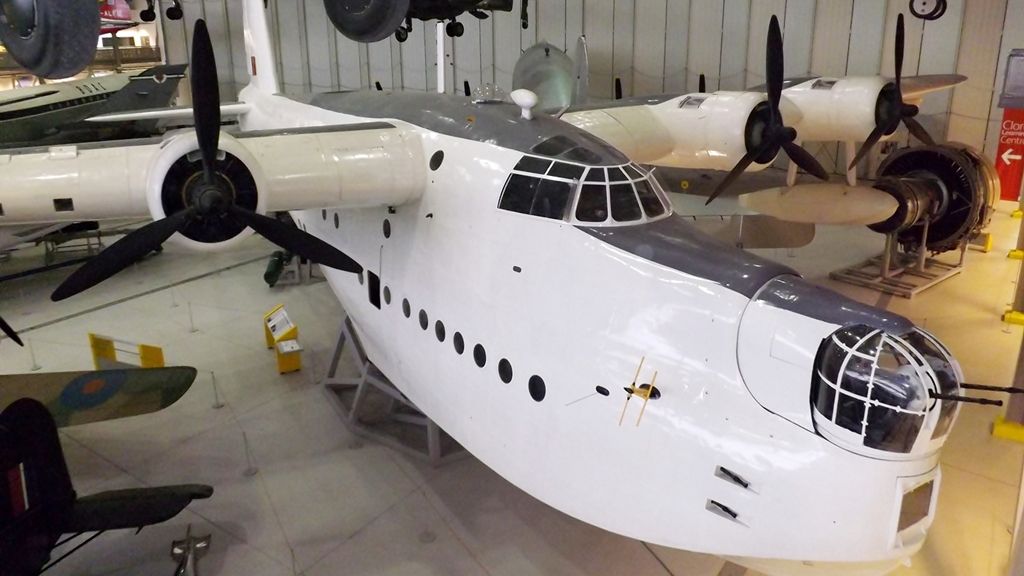
.jpg)
